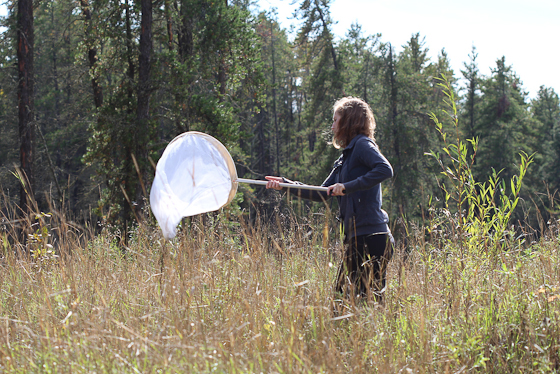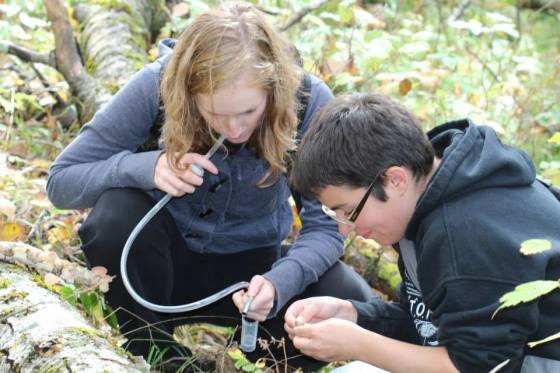
Only half of an estimated 35, 000 insects in BC have been recorded. A curator is urgently needed to address research priorities for BC’s most diverse group of organisms. Photo by Miles Zhang.
The following is a guest post by Professor Felix Sperling
I’m always amazed when I see a well-established natural history museum that doesn’t have entomology curators. What are their administrators thinking? Insects form half of the known species diversity of our planet, a fundamental fact that too many people are unaware of. The ecological and even economic impact of all those species is overwhelming across all terrestrial and freshwater ecosystems, which are of course the habitats that we occupy ourselves. And there is still a shocking amount of insect biodiversity left undocumented or misunderstood, lying in wait to bite us, literally and figuratively, just when we are unprepared to deal with it.

Over 16, 000 RBCM Entomology specimens have been loaned out in the past 5 years alone. Photo: S. McCann.
But that is just the surface. The study of insects is an indispensable portal to understanding life on our planet and therefore to knowing ourselves and our place in this world. An appreciation of the exuberant diversity of insects is an essential foundation from which to build a fully connected and integrated appreciation of our surroundings, and to understanding the diversity and vitality of our interactions. That connectedness is what modern museums strive to capture and present. An entomology curator is the nexus for such connections, serving to do so very much more than just assembling specimens. An entomology curator is responsible for half of all known biological diversity, which also means curation of half of our knowledge about diversity, a human construct that is vulnerable to extinction just like a language is. And more than a purely cultural construct, such a curator maintains the chain that ties the dynamic memory of a human community to the material reality that allows the people of our planet to thrive. So how can a serious museum do without one, especially in a region where biodiversity is important to the self image of a people and insect biodiversity professionals are already so few in number?
So I was seriously puzzled to hear that the CEO of the Royal British Columbia Museum, Professor Jack Lohman, is seriously considering redirecting their entomology curator salary line, which was vacated when Dr. Rob Cannings retired in 2012. But I hear that there is still time for us all to have some input into the process, since Lohman has agreed to discuss the issue one last time on January 22nd, and has asked for a demonstration of support for such a position from outside the museum by that date.

Curatorial oversight leads to enhanced public engagement, fulfilling the core mission of a public museum. Photo by Miles Zhang.
I hope that as many of you as possible can write a short letter to Professor Lohman to point out the importance of entomology in the context of the Royal British Columbia Museum and the broader community that it is part of. Letters from a diversity of backgrounds and institutions would be most helpful. Some of you will have already heard about this via emails that circulated just before the holiday break, and here is an information sheet that may help you to make the case. You can get a better sense of Professor Lohman’s vision and background here.
Letters on institutional letterhead would be best, and can be sent to:
Prof. Jack Lohman, Chief Executive Officer
Royal British Columbia Museum
675 Belleville St,
Victoria, BC V8W 9W2
And send a copy to:
Peter Ord: Vice President, Archives, Collections, and Knowledge
My deepest appreciation to all of you who have read this far, and especially to any of you who can send off a letter, however brief. May you all have a happy, healthy and prosperous year in 2015!

[…] noted by Dr. Felix Sperling at the ESC blog, there is some discussion about the position of curator of insects at the Royal British Columbia […]
Thanks Felix. This is a great summary.
I have sent off a letter. I have posted a copy of it here:
http://blogs.unbc.ca/huber/2015/01/06/insect-curation-at-the-rbcm-my-letter/
Thanks Dezene!
I’m sending a hand written letter since I’m not affiliated with any institution. Hope it helps!
As gardeners, we understand the importance of pollination and have witnessed the decline of pollinators in our area. We know the delicate balance of aphids and ladybugs, and never use pesticides or even herbicides. Having studied kinesiology, I understand the impact of such substances on the body, and living with and studying the pine beetles… I hope to put together a letter to the Royal BC Museum. Certainly, an entomology curator is so important, it makes me sad to think otherwise.
Good news! A curator will be hired at the Royal BC Museum. Thanks to everyone who helped in this effort, and particularly to Felix for this excellent blog!
[…] Oh my, it looks like the Royal BC Museum has lost its currator for their amazing insect colection, and they’re thinking about not hiring a new one! With the huge variety and ecological (and economic) impacts, this is a sad decision… Luckily we can help, and the Entymological Society of Canada has the scoop on how to do it… http://escsecblog.com/2015/01/06/royal-bc-museum-insect-curator-position-in-danger-but-you-can-mak… […]